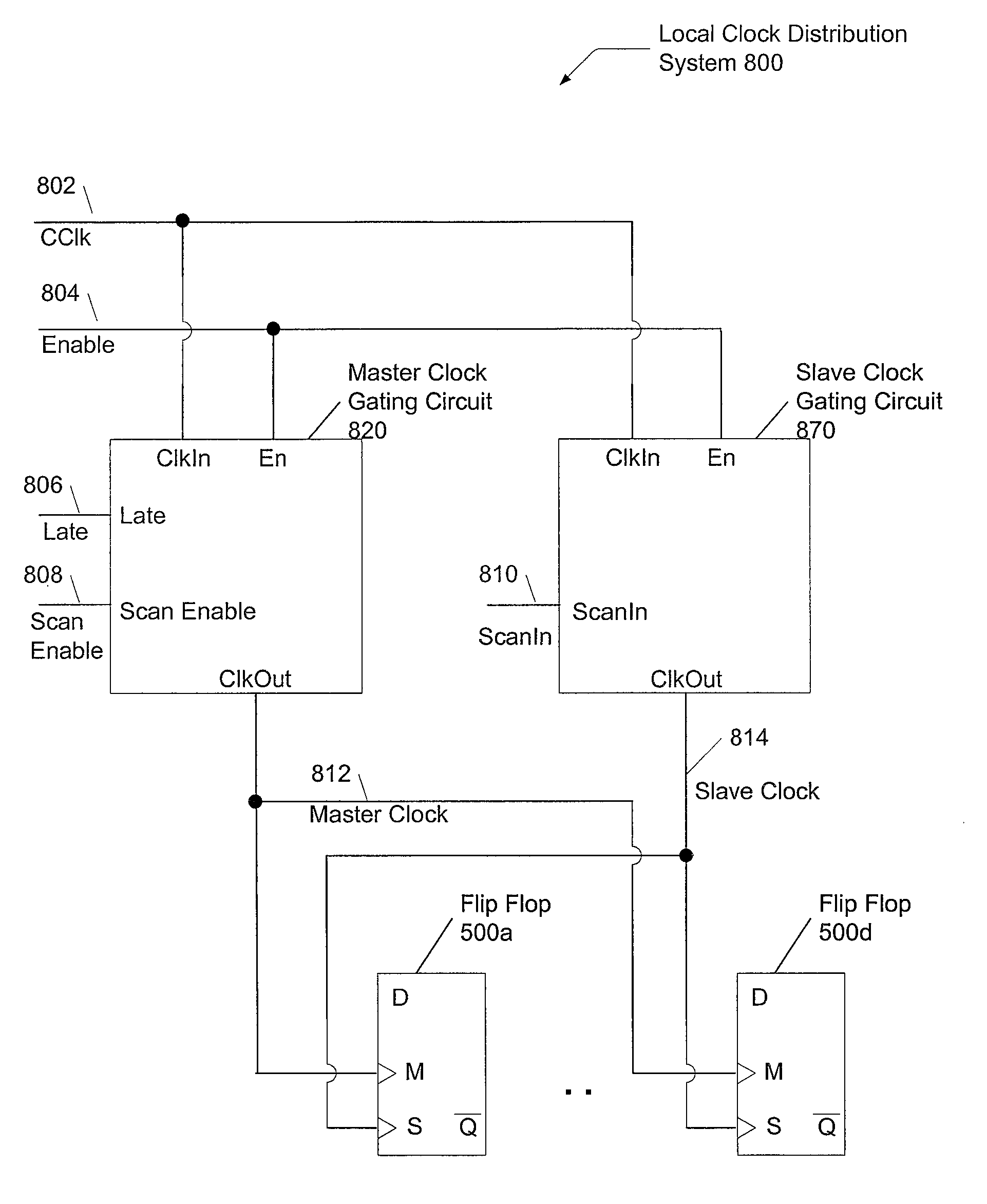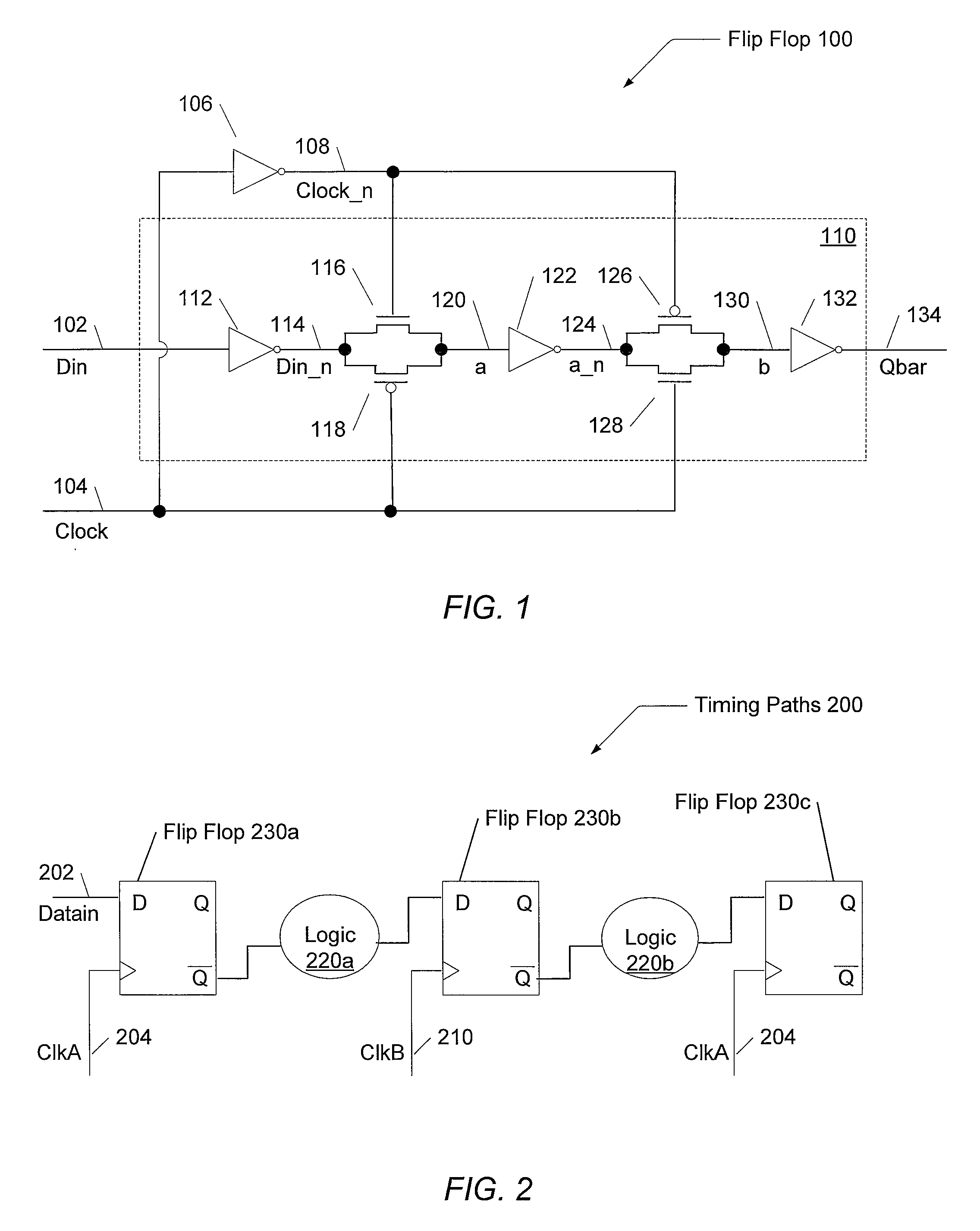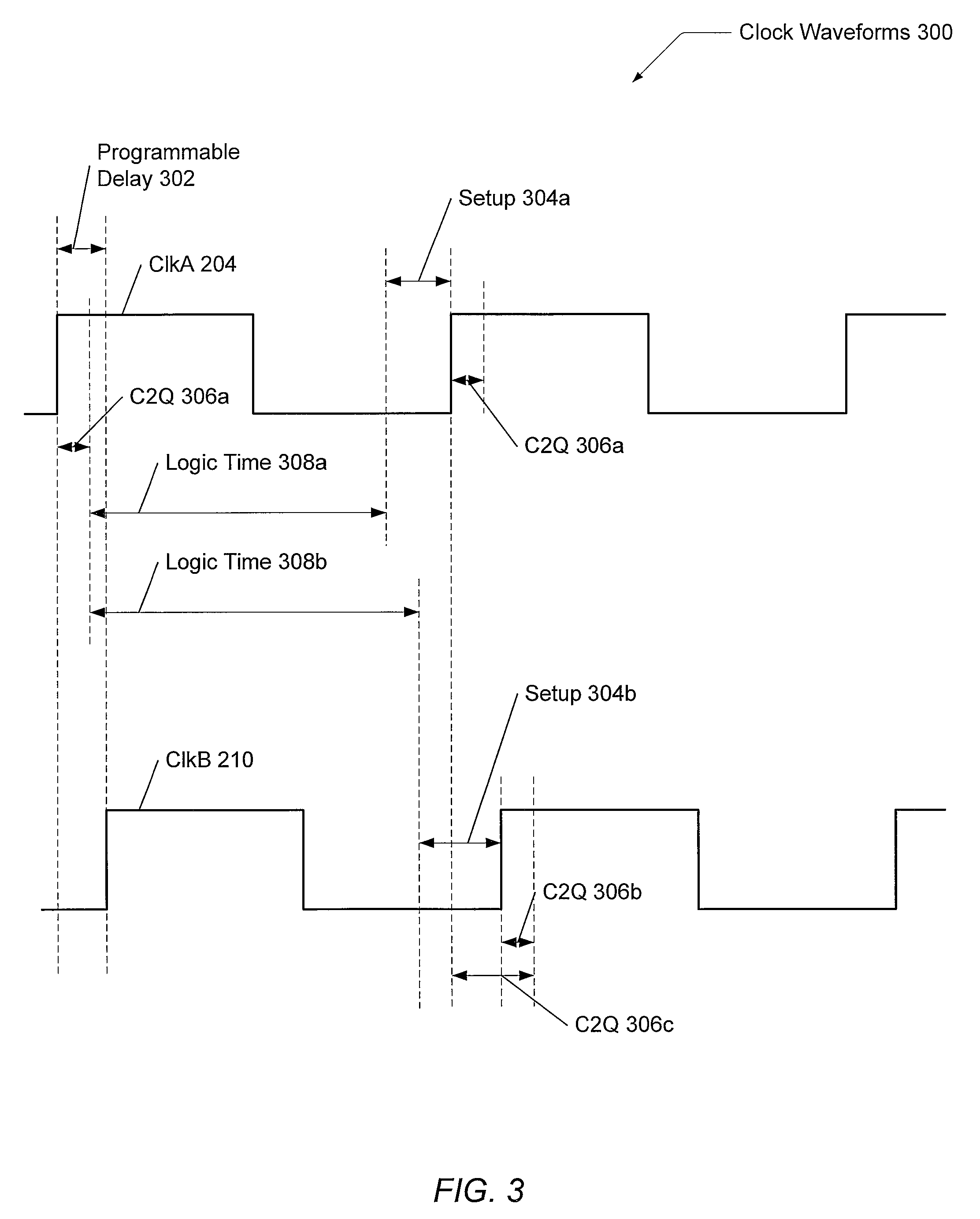Programmable sample clock for empirical setup time selection
a time selection and empirical technology, applied in the field of electronic circuits, can solve the problems of reducing the operational frequency and performance of the electronic circuit, c2q delay still limiting the operational frequency, and skewing value to no longer be negligible, so as to achieve the effect of more computation tim
- Summary
- Abstract
- Description
- Claims
- Application Information
AI Technical Summary
Benefits of technology
Problems solved by technology
Method used
Image
Examples
Embodiment Construction
[0030]In the following description, numerous specific details are set forth to provide a thorough understanding of the present invention. However, one having ordinary skill in the art should recognize that the invention may be practiced without these specific details. In some instances, well-known circuits, structures, techniques, and transistor sizing methods have not been shown in detail to avoid obscuring the present invention.
[0031]Referring to FIG. 1, one embodiment of a flip-flop circuit 100 is shown. This particular embodiment is a positive-edge triggered flip-flop comprising pass-gates, or transmission gates, to implement a master latch and a slave latch. One skilled in the art knows other embodiments may include a negative-edge triggered design, and the master-slave configuration may be implemented with other transistor topologies such as sense amps, C2MOS topology, dynamic circuits, differential inputs, and other design choices. A clock signal is received by clock line 104...
PUM
 Login to View More
Login to View More Abstract
Description
Claims
Application Information
 Login to View More
Login to View More - R&D
- Intellectual Property
- Life Sciences
- Materials
- Tech Scout
- Unparalleled Data Quality
- Higher Quality Content
- 60% Fewer Hallucinations
Browse by: Latest US Patents, China's latest patents, Technical Efficacy Thesaurus, Application Domain, Technology Topic, Popular Technical Reports.
© 2025 PatSnap. All rights reserved.Legal|Privacy policy|Modern Slavery Act Transparency Statement|Sitemap|About US| Contact US: help@patsnap.com



